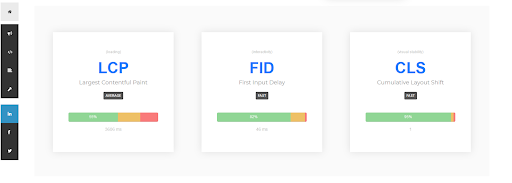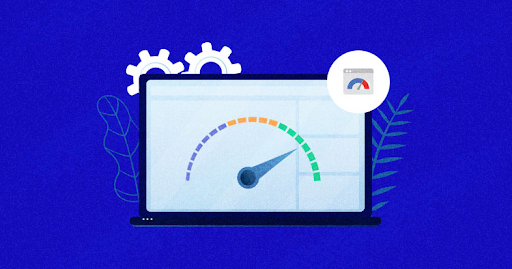Make Your Website Faster with PageSpeed Insights
Introduction
Google PageSpeed Insights is a free and extremely helpful tool that assists you in optimizing your website. It provides recommendations to improve the speed of your site. A higher PageSpeed Insights score improves the conversion rate and user experience.
In this article, we will understand what Google PSI is and why the page speed score is essential in this fast-paced world.
What is Google PageSpeed Insights
Google PageSpeed Insights is a free tool developed by Google that evaluates the performance of your site on both desktop and mobile services. It provides you with a score between 0 and 100.
If you get a high score it means your site has been optimized for efficiency as well as for speed. It also gives you recommendations on how to improve your site.
Let’s take a look at the performance of PageSpeed Insights and how to improve its score.
What is a Good PSI score
Hypothetically, the maximum score is likely to be 100 out of 100. As indicated by Google, a score exceeding 90 is good, 50 to 90 requires enhancement, and below 50 is regarded as poor.
But users often don’t care about the score. They just want to get the content of the page as fast as possible.
A better performance score helps to improve search engine rankings which leads to a better user experience.
How to use the PageSpeed Insights tool
Google PageSpeed Insights is quite simple to use. First, you need to go to Google PageSpeed Insights, put any URL into the box, and simply click on Analyze. After that, you need to wait for the tool to analyze the page. It takes some time depending on the speed of your internet connection.
After the analysis is done, you can see a score ranging between 0 and 100. You will be provided with a lot of opportunities to increase the performance of your page. Conducting an analysis is very simple. The important thing is to understand the metrics and execute the suggestions.
Understanding the PageSpeed Insights Reports and Metrics
Let’s take a look at three important segments of the report:
Core Web Vitals Assessment
In this section, at the top of the page, you can see Core Web Vitals Assessment Passed or Failed. Core Web Vitals are the metrics that Google uses as primary ranking factors:
- LCP (Largest Contentful Paint): It calculates the loading time, particularly the time it takes for the content to appear to the user.
- FID (First Input Delay): It calculates interactivity.
- CLS (Cumulative Layout Shift): It calculates visual stability particularly how much the content moves as it loads.

Diagnose Performance Issues
In the section titled Diagnose Performance Issues, you notice Performance Score. PSI provides you with a score for the following categories:
- Performance- It refers to the overall score. It presents the performance of your page in association with speed and optimization.
- Accessibility- It evaluates factors like alt text for images, ease of navigation, and so on.
- Best Practices- It calculates how well the page is attached to the web development best practices such as securing connections and using the latest web technologies.
- SEO- Search Engine Optimization concentrates on your better page optimization process for search engines.
Opportunities
Beneath the Core Web Vitals Assessment and Diagnose Performance Issues, a list of items called Opportunities can be seen. These are usually the suggestions provided by Google to assist you improve your site.
With the help of these instructions, you can improve the effectiveness and speed of the website. It leads to a better user experience and search engine rankings.
Simple Steps to Improve the PageSpeed Insights Score
Now we will discuss some steps that you need to follow to improve the PageSpeed Insights Score:
1) Minify Javascript, CSS, and HTML
Minification is the procedure of reducing the size of your code to load your page faster. It includes a procedure that eliminates all unimportant characters from the CSS, HTML, and Javascript files. It includes comments and white space.
You can minify them manually or with the help of minification tools such as RabbitLoader. It ensures that the code delivered to the user is faster and smaller in size to download. It assists you in decreasing the load time and improving the page speed score.
2) Speed Up Your Server Response Time
The server response time is also referred to as Timne To First Byte. A slow TTFB negatively influences the page load speed. TO decrease TTFB, you should try some steps:
- You need to update your server hardware to obtain more memory or CPU.
- You should start using a Content Delivery Network to circulate the resources of your page across different servers.
- You need to opt for a dedicated web hosting service to provide fast servers and low latency.
3) Eliminate Render-Blocking Resources
Render-blocking resources are videos, images, graphics, and other files. These resources prevent the rendering of the page, so the visitors won’t be able to see the content till the files are loaded.
There is no specific formula to get rid of this issue. You need to recognize the resources causing problems with the help of the Core Web Vitals report and PageSpeed Insights tool.
After the identification of these resources, you should either load them asynchronously or optimize them.
Wrapping Up
To improve the PageSpeed Insights score you need to follow the steps mentioned in this article. It is an invaluable tool for users to work on the SEO of their websites.
RabbitLoader is one such plugin you should use to improve the PageSpeed Insights score. It is an all-in-one speed optimization plugin that optimizes your website in just a few minutes. With the help of RabbitLoader, you can achieve better SEO rankings by improving the page speed score.

